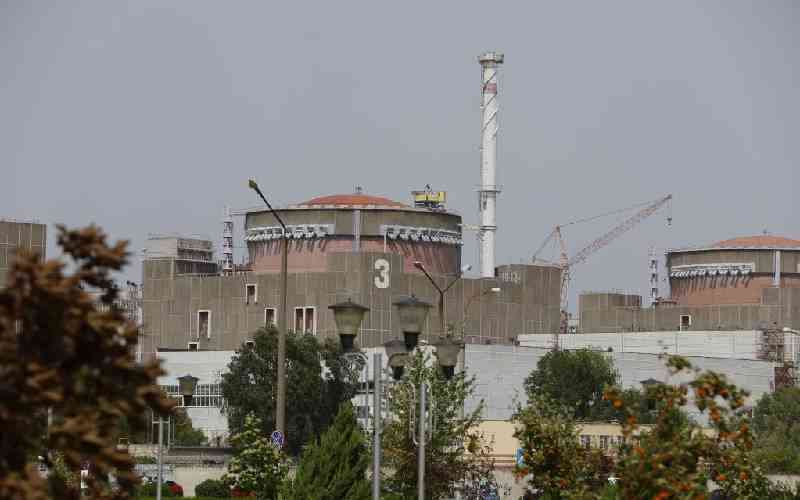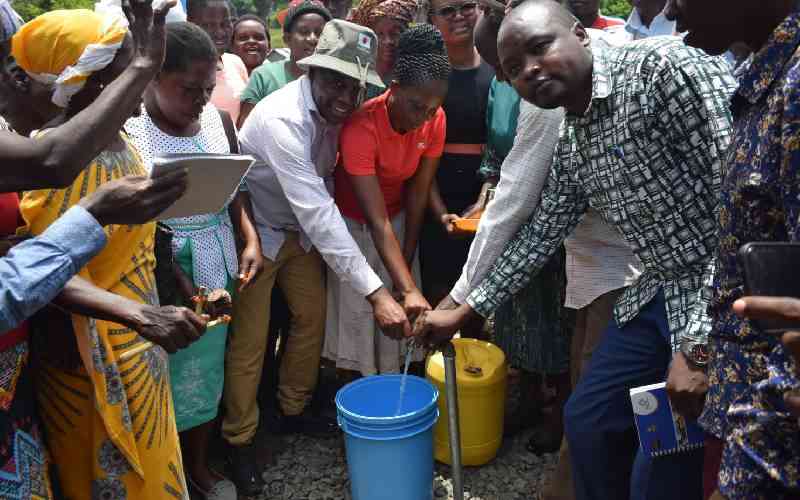Japanese authorities have raised the severity rating of their nuclear crisis to the highest level, seven.
The decision reflects the total release of radiation at the damaged Fukushima Daiichi power plant, which is ongoing, rather than a sudden deterioration.
Level seven previously only applied to the 1986 Chernobyl disaster, where 10 times as much radiation was emitted.
Japanese Prime Minister Naoto Kan said radiation leaks at the plant were declining.
The Tokyo Electric Power Co (Tepco), the operator of the plant, would soon provide a schedule for getting it under control, he said at a news conference.
"Step by step, the reactors in the Fukushima Daiichi power plant are moving toward stability," he said.
There have been no fatalities resulting from the leaks at Fukushima, and risks to human health are thought to be low.
Meanwhile a 6.0-magnitude earthquake on Tuesday prompted the plant's operator to evacuate its staff. There was no other damage.
The aftershocks come a month after a huge quake and tsunami hit north-east Japan, leaving 13,228 people dead and 14,529 missing. More than 150,000 people have been made homeless.
Impact of leaks
The Nuclear Safety Commission of Japan announced in a statement that the crisis level at the Fukushima Daiichi plant was being raised, adding that it was a preliminary assessment which required further technical evaluation by specialists.
The level seven signifies a "major accident" with "wider consequences" than the previous level, officials say.
"We have upgraded the severity level to seven as the impact of radiation leaks has been widespread from the air, vegetables, tap water and the ocean," said Minoru Oogoda of Japan's Nuclear and Industrial Safety Agency (Nisa), the government's nuclear watchdog.
Reporting the commission's decision, the IAEA said previous level five ratings had been provided separately for accidents at Reactors 1, 2 and 3 but had now been combined as a single event. Another affected unit, Reactor 4, has retained its level three rating, it said.
One official from Tepco said that radiation leaks had not stopped completely and could eventually exceed those at Chernobyl, Reuters news agency reported.
Stay informed. Subscribe to our newsletter
However, a nuclear safety agency spokesman told reporters the leaks were still small compared to those at the plant in Ukraine, then part of the Soviet Union.
"In terms of volume of radioactive materials released, our estimate shows it is about 10% of what was released by Chernobyl," he said.
The decision to raise the threat level was made after radiation of a total up to 630,000 terabequerels had been estimated at the stricken plant.
That would classify the crisis at level seven on the International Nuclear and Radiological Event Scale (Ines).
It was not clear when that level had been reached. The level has subsequently dropped to less than one terabequerel an hour, reports said.
In comparison the Japanese government said the release from Chernobyl was 5.2 million terabecquerels.
These measurements do not necessarily have any bearing on the likely medical impact on humans, which is measured in sieverts.
The severity level of Japan's nuclear crisis had previously been set at five, the same as that of the accident at Three Mile Island in the US in 1979.
The cooling systems at the Fukushima Daiichi nuclear plant were damaged in last month's disaster and workers have been struggling to prevent several reactors from overheating.
Officials have warned it will be several months before the situation at the nuclear facility is brought fully under control.
 The Standard Group Plc is a
multi-media organization with investments in media platforms spanning newspaper
print operations, television, radio broadcasting, digital and online services. The
Standard Group is recognized as a leading multi-media house in Kenya with a key
influence in matters of national and international interest.
The Standard Group Plc is a
multi-media organization with investments in media platforms spanning newspaper
print operations, television, radio broadcasting, digital and online services. The
Standard Group is recognized as a leading multi-media house in Kenya with a key
influence in matters of national and international interest.
 The Standard Group Plc is a
multi-media organization with investments in media platforms spanning newspaper
print operations, television, radio broadcasting, digital and online services. The
Standard Group is recognized as a leading multi-media house in Kenya with a key
influence in matters of national and international interest.
The Standard Group Plc is a
multi-media organization with investments in media platforms spanning newspaper
print operations, television, radio broadcasting, digital and online services. The
Standard Group is recognized as a leading multi-media house in Kenya with a key
influence in matters of national and international interest.









